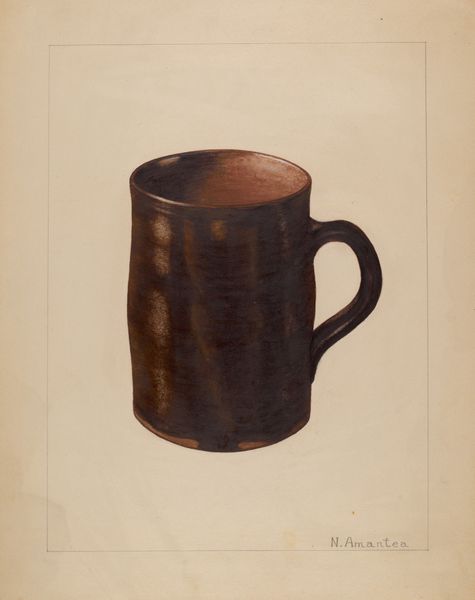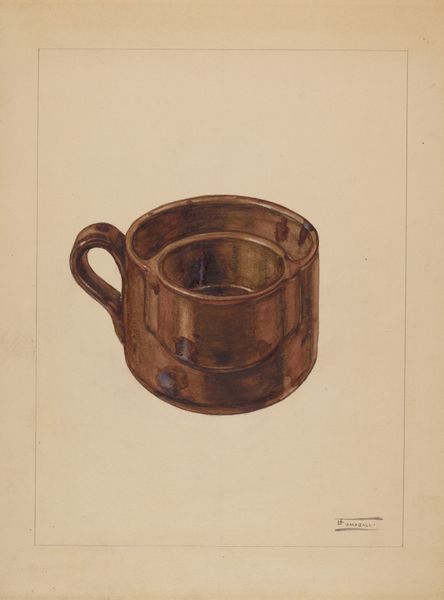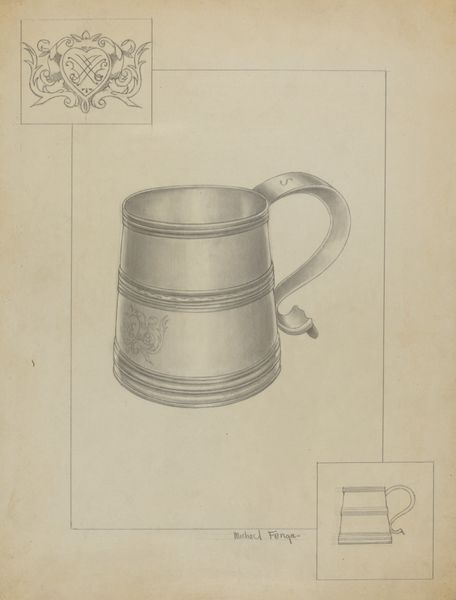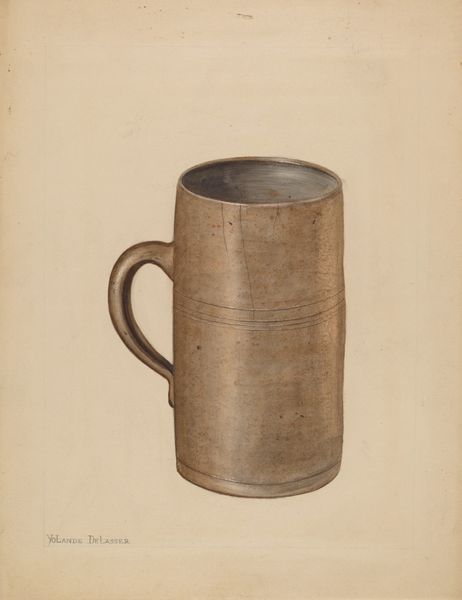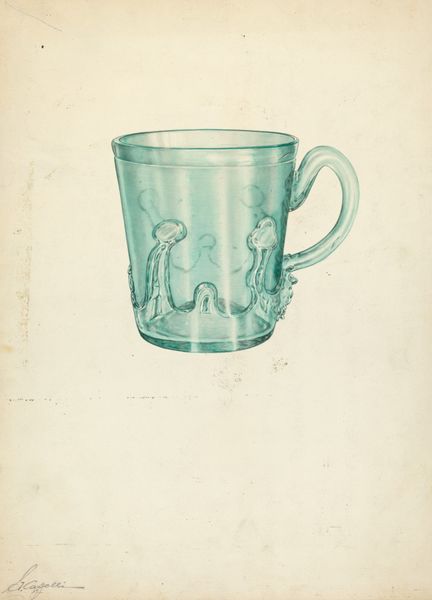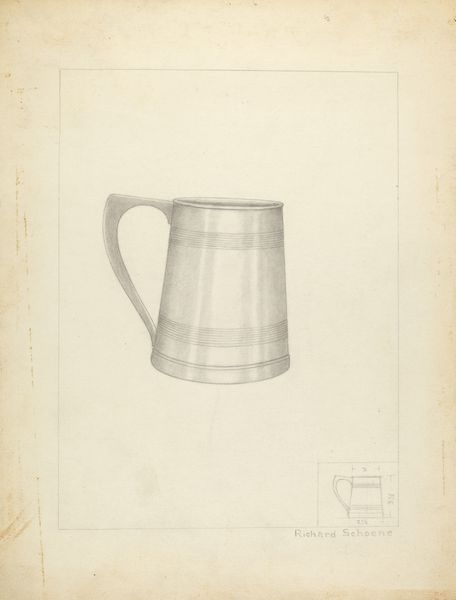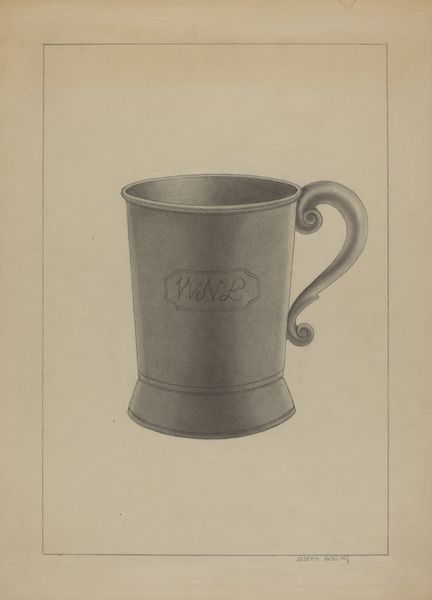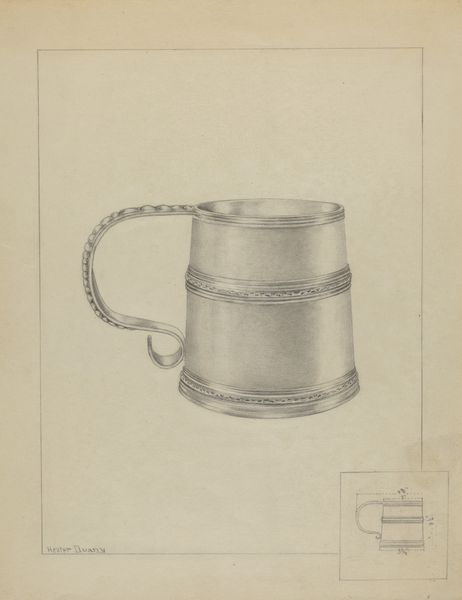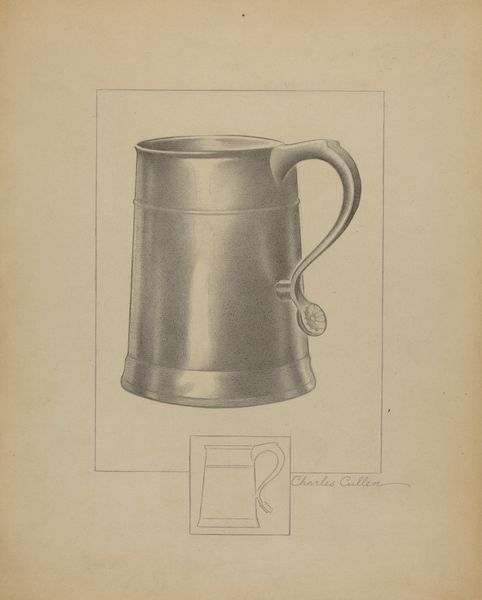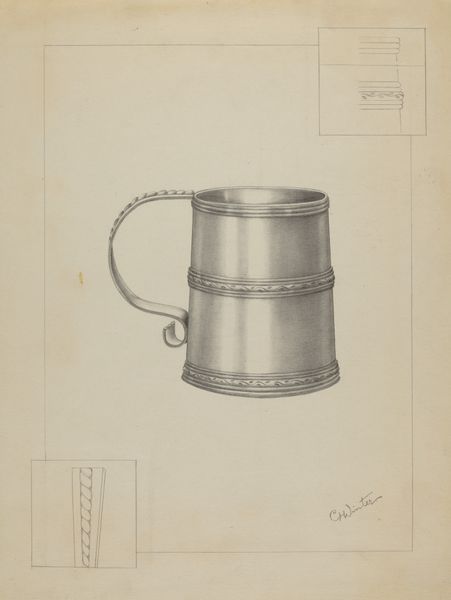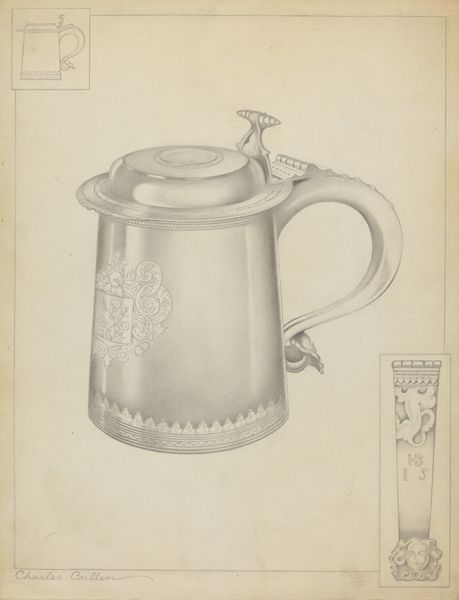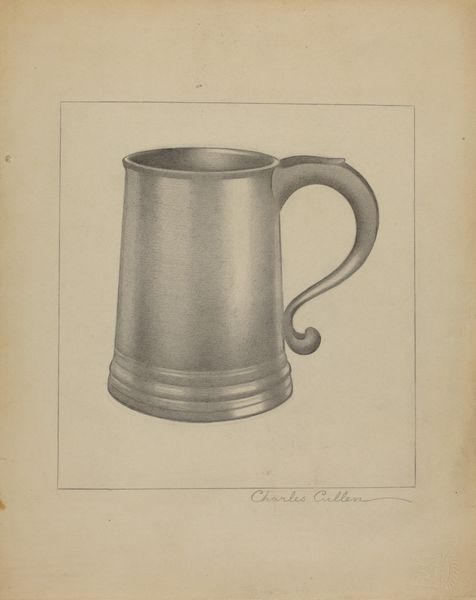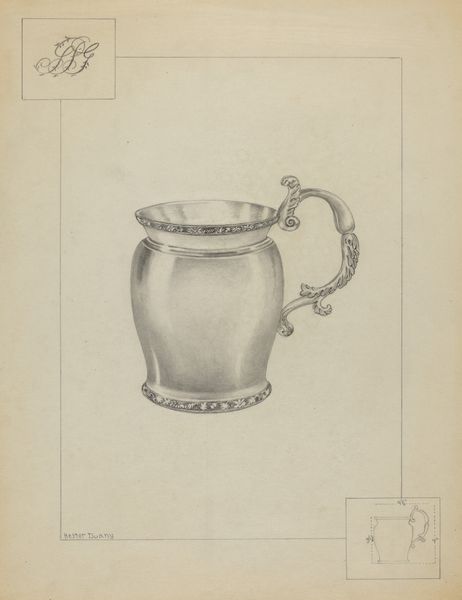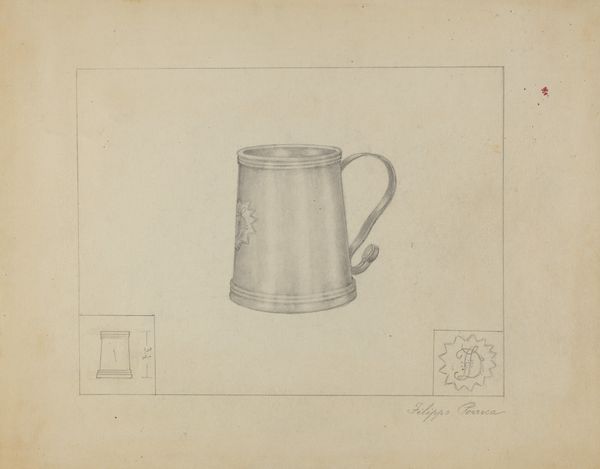
drawing, watercolor
#
drawing
#
watercolor
#
watercolor
#
realism
Dimensions: overall: 30.5 x 22.8 cm (12 x 9 in.) Original IAD Object: 4 1/2" High 3 1/4" Dia.(top) 2 3/4" Dia.(bot.)
Copyright: National Gallery of Art: CC0 1.0
Editor: This is "Earthenware Beer Mug," a watercolor and drawing by Wilbur M. Rice from around 1938. There’s something almost architectural about the way it’s depicted, very precise, and the object itself feels very grounded and ordinary. What stands out to you when you look at this piece? Curator: I'm intrigued by Rice's choice to portray such a commonplace object with such deliberate care. This reflects a trend during the 1930s, shaped by the Great Depression, when American artists focused on local, everyday subjects as a form of social commentary, celebrating ordinary people and traditions. Why represent this mug specifically, I wonder? Editor: Perhaps it was personal to Rice? The inscription, "Wm Stoeckert, 1890, Ulm," makes me think of a family heirloom or a memento of someone significant. It seems to hold a certain history. Curator: Exactly! And Rice wasn't simply painting an object; he was representing cultural identity. Ulm is a city in Germany, while the inclusion of "New Ulm" below it suggests a connection to the wave of German immigration to America in the 19th century, perhaps Rice’s or Stoeckert's own heritage? This work subtly touches on themes of migration, adaptation, and the preservation of cultural memory. What does that speculation suggest to you about Rice's purpose in making this artwork public? Editor: It transforms the simple beer mug into a symbol of cultural history and personal connection, I wouldn't have looked that deep initially. This reminds me that even the most humble subject matter can reveal layers of social and historical context. Curator: And the act of exhibiting it elevates that everyday object into the realm of art, suggesting the value of such heritage to a wider audience. The museum is no neutral container here. Rice’s deliberate act makes visible an overlooked chapter of migration, cultural preservation and perhaps a subtle comment on whose stories get told, and where. Editor: I’ll definitely think about everyday objects differently now, thanks!
Comments
No comments
Be the first to comment and join the conversation on the ultimate creative platform.
